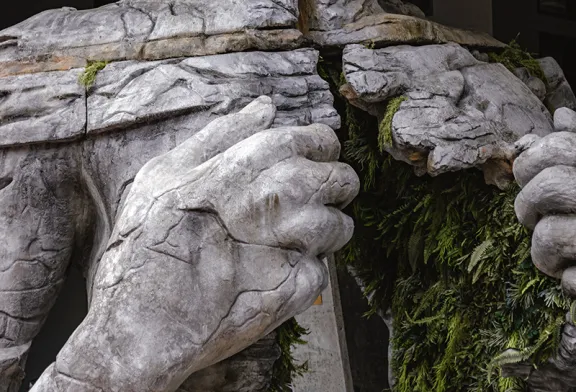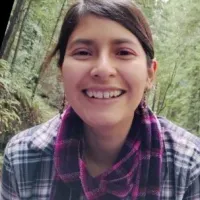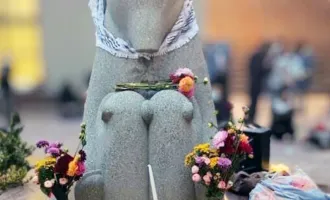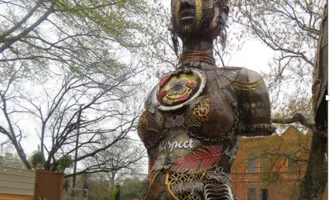
Photo by Marianna Smiley on Unsplash.
Healing Cycles of Institutional Harm with Indigenous Wisdom
As a 32-year-old Indigihood femme, several physical injuries and inflammatory conditions have taken toll on my mental and spiritual health. In 2016, during my graduate studies at the University of Michigan, I fell down half a flight of stairs. After the x-rays ordered by the doctor revealed I had two fractures on my tailbone, I cut down on biking, running, and almost anything able bodied folks like me take for granted.
Some years later, I slipped on my front porch. As the rained poured over the San Francisco Bay area, the loud sound from my knees meeting the cold ground triggered memories of my previous injury. I eventually fell into a deep depression and found relief in antidepressants, physical therapy, and a medical work leave. Even going up a hill was painful and is something I never thought I would have to think twice about. As I wrapped up physical therapy, I thanked the physical therapist for her support which helped me pay attention to my body, tend to it with anti-inflammatory herbs like arnica, and gradually swim a couple of times a week.
Four years later, when I thought injuries were a thing of my past, I developed tenosynovitis, a painful condition that restricts wrist and thumb range of motion. Again, I had to stop many of the things I am used to including washing dishes, carrying groceries, journaling, typing for extended periods of time, and cooking.
Living on my own meant I had to figure out how to get by without the things that sustained me emotionally, physically, and spiritually. When the doctor suspected it could be arthritis, I worried about the results of my bloodwork. Thankfully it was not arthritis and I recovered with the support of Indigenous medicinal approaches more so than the biomedical treatment which entailed always wearing a wrist brace, except when showering, for two months.
In October 2022 as the symptoms continued to progress, I sought out a curandera (medicine woman) during my visit to the Zapotec village of San Luis del Río in Oaxaca, México. My cousin helped me gather the rue, mezcal, and the fresh egg needed by the curandera for my limpia (spiritual cleansing). The most eventful part of the limpia was the curandera’s unexpected blow of mezcal on my face, which startled me. Later, I heard this is a common practice in limpias to help move stagnant energy or susto (trauma) out of the body. After receiving the cracked egg’s guidance, the curandera recommended I see a chupadora (someone who massages with ventosas) and that I continue to receive limpias from time to time to help me release energy and envy from others. We also talked about (re)connecting with my intuition, to guide and protect me in my healing journey.
In December, I returned to Oaxaca to wrap up field work funded through the Harold Varmus, MD, Endowed Fund for Global Health Scholars. I traveled to the Oaxacan coast with a community of parteras tradicionales (traditional midwives) who specialize in birth keeping, sobadas (massage), limpias, and other Indigenous healing practices. After explaining to one of the parteras tradicionales what the curandera from San Luis del Río told me, she recommended I receive a limpia from her mother, a reputable curandera. The following day after my second limpia in Oaxaca, I received ventosas treatment (cupping therapy). Ventosas are small cups placed on the body part/s where pain and toxins are concentrated, usually following a massage with herbal solutions. Through pressure and a sensation of sucking, the release of the toxins and energy feels profound.
As a first timer receiver of ventosa treatment, I believe this is what truly helped my body heal and regain balance. From the heart-to-heart talks, the limpias, and sobadas with ventosas, Indigenous medicine and loving care nourished my body.
As a current Xicana Indigenous PhD student, my body has gone through prolonged stress and institutional trauma. I have thought about leaving academia many times due to the toll on my wellness. bell hooks, for example, died in their 60s, leaving behind intergenerational wisdom on Black feminism, liberation, and collective healing (at a deadly cost).
Though I am grateful to be “injury free” now, I worry that a new physical or emotional injury awaits between now and when I complete my dissertation and the PhD program. To remedy the possibility, I am going to keep myself in balance by continuing to seek out limpias, healing ceremonies, and connections with BIPOC peoples committed to ending cycles of colonial harm. Additionally, I am doing my part to shift the culture in academia that deprivilege wellness and rest. Last quarter, in a seminar I facilitated for first year PhD students, I made every effort to honor our collective grief and incorporate activities that center mindful listening, silence, and heart to heart mutual support.
Because our bodies are a temple, it is crucial we prioritize heart, body, mind, and spirit wellness. Engaging our radical imaginations to push back against an academic culture that values profits and productivity over bodies of culture is a form of resistance. Academia is not doing well unless peoples of the global majority operating in these spaces are well, happy, and supported.
A recent tweet by Dr. Lorgia García Peña honors and challenges the violence within academia as a place “where racism, paternalism, colonialism and whiteness converge to f*ck with womyn of color.” While this is a reality for many of us in academia shaped by our intersectional identities, Dra. Rocío Rosales Meza reminds us that “in a world of trauma, let us keep our hearts open, our minds decolonized, our actions toward healing and liberation. AND let us be keepers of possibility, not pain.”
Colonial pain and suffering are in the air we breathe, and so is the intergenerational wisdom and healing that our ancestors protected and passed down to us. We do not need permission to rest and just be, because when we are nourished by Queer, Trans, Black, Indigenous, and Peoples of Color wisdom, we radiate love, care, joy, and our kindred brilliance.



